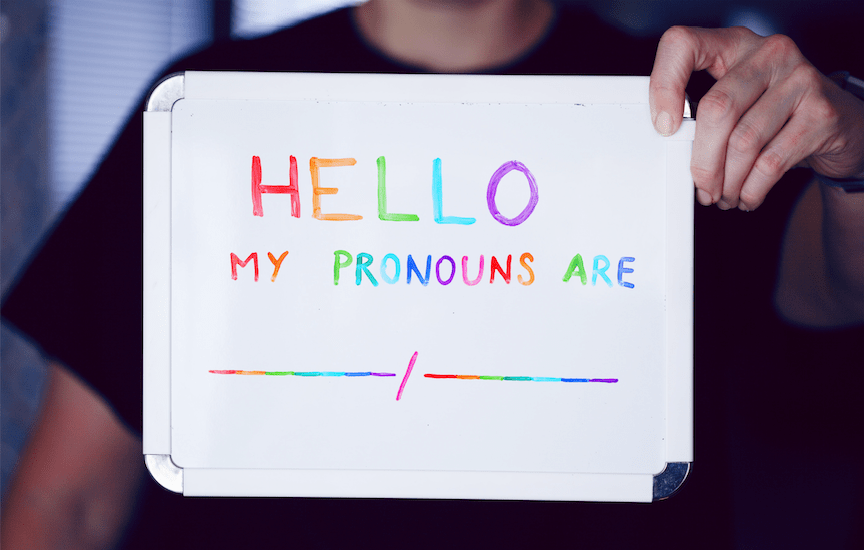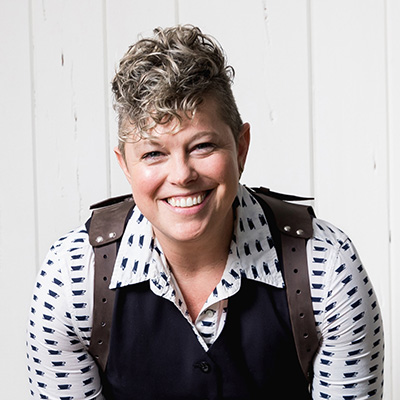Now that Pride Month has come to a close, what commitments will you make for the rest of the year and beyond?
Many of us in the LGBTQ+ community have seen a repeating pattern every June, whereby companies of all sizes publicly demonstrate allyship with a multicolored version of their logo or a rainbow flag on their social media accounts. Yet, in order for real change to occur, there is an opportunity to deepen the commitment to both frontline and systemic inequities by engaging more deeply and investing in those who have been denied equal opportunity.
How Can We Help Our Local Communities?
As an organizational leader, you might be wondering what you can do locally, even if you don’t have the financial contribution capacity of a larger enterprise.
As the former owner of a cause marketing agency for 14 years, the current owner of two conscious leadership organizations and a proud member of the queer community, I can share five tangible actions your organization can take, starting today, to help improve the lives and rights of LGBTQ+ people:
- When in need of outside products or services for your company, purposefully seek local or regional businesses owned by people from various racial and ethnic backgrounds, LGBTQ+ and people with disabilities.
- Use your company’s platforms — conferences, podcasts, webinars, newsletters, etc. — to amplify the voices of historically untapped people, and compensate them equitably.
- Engage employees to advocate against anti-trans legislation for youth and adults alike if it comes up in your area (or in the areas where their friends or family members live).
- Hire experts to help those within your organization better grasp what experiences and needs are omnipresent for people from various racial and ethnic backgrounds and LGBTQ+ groups within your own local community, and then determine how your company can help.
- Contribute to local queer youth and gender non-conforming support centers as well as food pantries via monetary donation and/or volunteerism — and encourage your employees to do the same with a funds-matching program.
Examples Of Long-Term Corporate Social Impact
For a select few exemplary corporations, allyship is a verb. It is not lost on them that Pride was birthed from a rebellion against discrimination by police officers, led by Black and Brown transgender women, namely Marsha P. Johnson.
Take Unilever’s United We Stand campaign, which is now in its third year and runs throughout the year. Working with Sean Coleman, an LGBTQ+ community strategist who is represented by my organization Consciousness Leaders, the company is focusing on increasing the scores of five locales that scored a zero on the Human Rights Campaign’s Municipal Equity Index, which helps residents learn how inclusive their city’s laws and policies are of LGBTQ+ community members. To achieve its goal, Unilever is addressing frontline issues like conversion therapy and the criminalization of HIV, as well as systemic issues. This is a great example of what ongoing engagement and investment can look like on the part of corporations that are deeply committed to equity consciousness.
While many retailers offer Pride-themed products during the month of June, and donate a portion of profits to an LGBTQ+ charity, many customers can perceive that as “rainbow-washing.” Bombas, on the other hand, started with an intentional collaboration with queer artists Ohni Leslie and Daniel Quasar on its special Pride line. Then, the apparel brand tied the line to its “One Purchased = One Donated” mission, donating one item per purchase across three LGBTQ+ social services organizations and community health resource centers. As opposed to a month-long campaign, the company has committed to year-round donations to three charities in the United States, Casa Ruby in Washington, D.C., the Transgender Resource Center of New Mexico, and Mozaic in Columbus, Ohio.
What these two examples demonstrate is continuous, community-based impact. It’s not enough to consciously create workplaces where each and every one of your employees feels safe to be themselves; this is the time to double down on community support. This is what conscious leadership is all about: thinking about your organization as responsible for its people as well as the greater good.
Equity is a choice, and allyship is an ongoing process. As leaders, we have the power to choose how we use our privilege and distribute our wealth in order to create positive, lasting change.



0 Comments